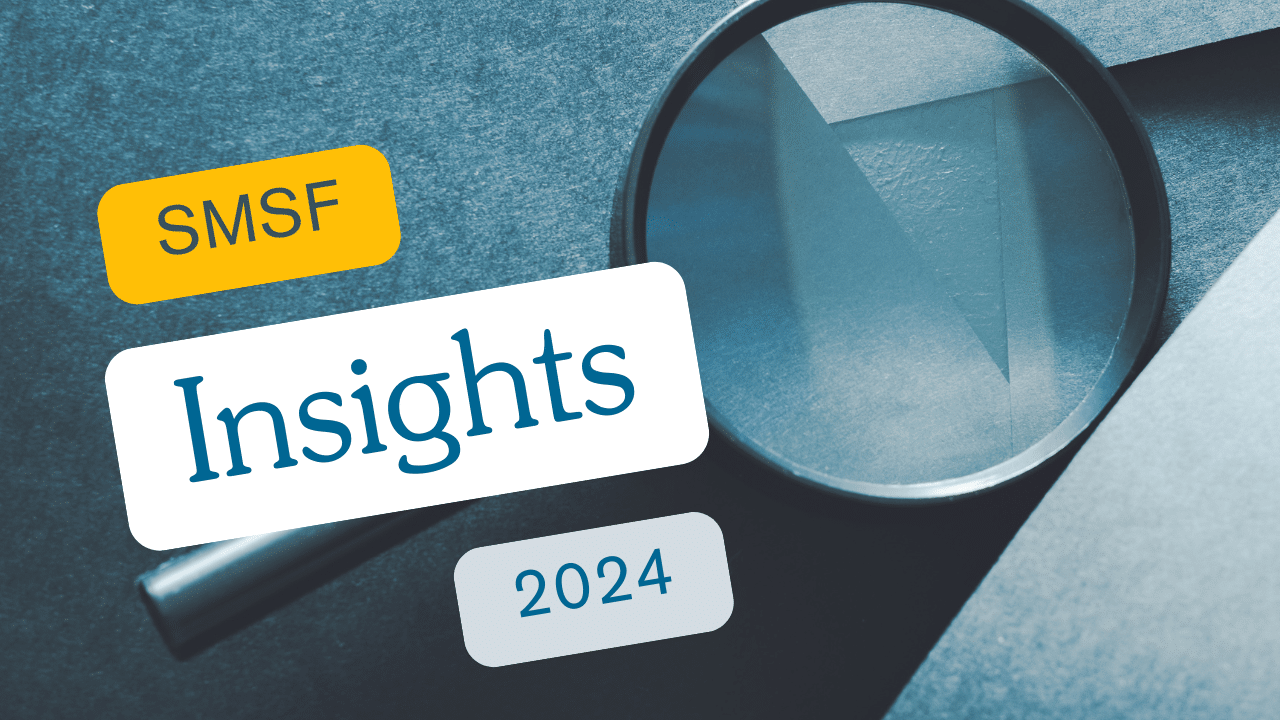Tim Steele, CEO of Class, talks through key insights from their 2024 Annual Benchmark report, including the potential tax liability impact of Div 296, the challenges of Superstream, how ETFs are increasing in popularity, and some of the ways that SMSF trustees differ from members of public super funds.
See also the following reports from Class on the most popular investments for SMSFs.
- 20 most popular Australian shares for SMSFs
- 20 most popular international shares for SMSFs
- 20 most popular managed funds for SMSFs
- 20 most popular ETFs with SMSFs
- 20 most popular LICs/LITs for SMSFs
Transcript
Can we start with the potential impacts of the Division 296 tax? And I know this is something you’ve highlighted in the report before, but what were some of the interesting findings this year?
Look, I think we’ve crunched some analysis, obviously based on FY23 tax returns. And so it was interesting for us, I think, probably to look at both the breadth of clients that were impacted. And there was just over 16,500 of our members who we thought would be affected by Div 296 if it was to become legislated. And probably the surprise for us, Penny, was just the average tax liability that people had. It was probably a bit higher than we might have hypothesised. It just under $50,000, which is a material amount of money for people, obviously, to have to pay in tax.
And then there were 5% of those affected who, based on our analysis of their investment mix, who we felt would be unlikely to have sufficient cash reserves to actually be able to pay that tax when it fell due. So they would have to have potentially sold an asset, assuming they could if it wasn’t an illiquid asset. And so that was an interesting insight for us on the very real impact and what that was going to mean for trustees.

Free eBook
SMSF investing essentials
Learn the essential facts about the SMSF investment rules, how to create an investment strategy (including templates) and how to give your strategy a healthcheck.
"*" indicates required fields
So what are some of the things that those trustees could think about doing to prepare for it, assuming that it comes in?
Look, I think first thing we would say is get good financial advice. We’re strong advocates of getting out and seeking advice, and there’s people far better technically qualified than I, Penny, to give that advice. But fundamentally, obviously, the proposed legislation applies to the assets held in the fund above $3 million. And so there may be steps that trustees could take to ultimately reduce the balance to a point where it’s below $3 million, and therefore, they’re not, in fact, going to be taxed. But they would need to carefully consider what that would mean, obviously, their long-term retirement planning and take into consideration, obviously, a range of other factors with regards to the assets and valuations and how easy it may be to actually potentially divest those assets.
Look, I don’t know if you’ll be able to talk to this, but it’s not actually been implemented yet. What do you think the chances are of it coming in as is?
Look, I think it’s interesting, isn’t it? I mean, it’s been deferred, so we know that it’s not going to be debated in the Senate until at least October. We’ve got the benefit of the SMSF Association out there advocating on behalf of the industry and spending a bit of time in the halls of Canberra chatting to politicians. We know that in order to get the number of votes, they’re going to have, I believe, three cross-benchers are going to have to support the legislation. And so there’s some question as to whether they’ve got that support at this point in time.
I think probably the more contentious issues for those who might be considering supporting it is, I think this position around taxing unrealised gains is probably a really interesting, potentially contentious, I think, quite frankly, contentious element of the legislation, which creates a really interesting precedent potentially in tax law in Australia. And so I think that’s an area that certainly the cross-benches, I think, are interested in considering and looking at.
And look, you touched on this as well. The report also shows that a lot of SMSF trustees are still not getting advice. Were you surprised by this? And I guess, what do you think the industry should be doing about it?
Yeah, I think certainly the number of trustees, at least, that we have access to the data. So we take our report is very data driven. We have some experts who contribute to that and provide some industry context. But we just look at the data. In our case, we look at how many funds have an advice fee that is being deducted from it. And that has remained very consistent over the last three years at just over 49,000. And it bumps around in the hundreds, but it literally has been very consistent at just over 49,000 of the funds. And so therefore, we’re not seeing a material shift up or down, but whereas the number of SMSFs increased, therefore, as a percentage of the total number of funds receiving advice, it is going down.
So I would say it hasn’t surprised us, given what we understand about market dynamics, particularly with the number advisers in Australia having dramatically reduced over the past five years. And we saw a further reduction over the last twelve months, but just over 5%. And so we’re not surprised by the fact that perhaps fewer SMSF trustees, in fact, there’s fewer Australians are able to get advice just because of the number of financial advisers.
There is some, again, proposed legislation of the quality advice review tranche two that we’re, again, from an industry point of view, very supportive of in terms of trying to remove some red tape and make it easier and more cost effective for financial advisers to actually give advice to Australians. And there’s also a potentially new category of financial adviser that will make it easier for super funds and other entities to actually give a certain scope of advice to their members. And so we’d hope that that will mean more Australians do have access to advice. I think part of the opportunity is for more people to understand the benefits of actually getting advice and making a conscious choice to actually reach out and engage with a financial adviser.
So do you think it’s more supply-driven than demand-driven or a bit of both?
I would say that there is a combination of factors… Advice is not necessarily well understood, and what’s the benefit and value and cost associated with it. But we also have a supply constraint in that there are less advisers today than there once were. And so therefore, given the practicalities of the compliance obligations those advisers have, and typically a finite number of clients that they’re able to service, they’re very naturally becomes a ceiling with the number of Australians who can actually access advice.
One of the things I thought was quite interesting about the report was that 46.3% of concessional contribution transactions are still processed manually and not through Superstream. So obviously, there are some exemptions that may not all SMSFs have to use it. But I thought that was an interesting statistic, particularly given that we’ve got payday super coming in in a few years. What are your thoughts on that?
Super knowledge is a super power

"*" indicates required fields
Yeah, that was really why we actually caught our attention for exactly the same reason, Penny, as we thought that it demonstrated that we still had a fair bit of work to do to improve the utilisation or at least engagement around Superstream, and that if we didn’t manage to make a shift in that in SMSF, that it would create some likely administrative challenges in relation to payday super. So that’s exactly the issue. And look, I think it’s interesting to see what more we could do as an industry to encourage adoption of Superstream, but it’s certainly something that we would be seeking from a broader industry perspective to encourage more trustees to utilise the Superstream.
And I guess it’s both ways. It’s not just the trustees, it’s the employers as well.
Of course, yes.
And the report showed that SMSF trustees are more likely to be in pension phase, post 65 than APRA fund members. What do you think the main reasons are for that? And again, that was the second year in the row. I think the report has shown that.
Yeah, that was consistent. So we didn’t make as much of that this year. It was interesting. And I think last year was probably the first time we had that data point, and it was such a stark contrast that it certainly took us by surprise that there was such a big difference. Very consistent. I mean, slightly increased, actually, in terms of the gap for this year, which probably just demonstrates that despite all of the engagement and I know interest from APRA and encouragement that they’re giving APRA funds to adopt the Retirement Income Covenant, it’s not yet biting.
And I think the hypothesis we would have, and again, as I’ve indicated, we just look at the data, we can form views or have an interest in these things. Our view would be it’s fundamentally reflective of the level of engagement that SMSF trustees have of their super by comparison to perhaps APRA regulated members. And that’s self-managed super funds. People want control. They want flexibility. They want to take an active interest and engagement in their superannuation, which is why they’re attracted to an SMSF in the first place. So it’s really of no great surprise to us, therefore, that we see a much higher percentage of those members actually having commenced a pension.
It may also be reflective that even though we have a low percentage in terms of just over, we know we looked at 73, so 27% of members getting advice, There may be a higher percentage who have at some point got advice, particularly as they approach retirement, and they might have received advice leading into retirement in relation to the commencement of their pension. And then perhaps they, again, one might be that they are then now responsible for their investment strategy, even though they’ve commenced the pension.
And I guess also, given the engagement of SMSF trustees, the report also highlights how they’re more likely to use the strategies around non-concessional contributions and wrapping those up into three years. And SMSF members are more likely to do that. They’re what, 50.6% of all NCCs from members aged 65 and over. So that’s interesting. The older members are more inclined to do that.
Yeah, look, this was a really interesting data point for us, and a material spike from FY22 to FY23. The most obvious reason for that is the removal of the work test effective from 1 July 2022. So it shows that that age demographic is taking advantage of that legislative change. I mean, that was a significant increase, as you can see from the data point for $232 million to $936 million for those aged 70 and over. So that was a really very significant increase.
I think perhaps not captured in the insights here, but was another interesting data point for us is that at the same time we saw this spike in 65 and over at 50.6% of total contributions, we saw a decrease in contributions in absolute terms, not just percentage terms, but in absolute terms for the age group of 40 to 65. And that had decreased over that same period by 18%. Now, that for us was really interesting because perhaps if you think about the long term impact of that, that segment of the population, if not making those same non-concessional contributions, particularly earlier in their life, will have to catch up at some point to meet their retirement objectives.
And so the question was, what’s driving that? Again, our hypothesis might be cost of living is biting. That segment of the population is probably paying off a mortgage. Interest rates are having an effect, the cost of living more generally. And they may not have access to the same cash that they did previously to actually make that level of non-concessional contribution.
Yeah. So what are some of the interesting findings from this report around investments? ETFs were a popular investment again?
Yeah, ETFs I think we’re the only major asset class outside of domestic shares that we saw growth in terms of gross in popularity. And we now have, at least based on our data and the funds on class, just under 33% of all Class SMSFs that hold an ETF. And look, whilst the assets as a percentage are still relatively low with domestic shares and property still being very strong contributors to asset mix, at 5.4% of overall mix, they are continuing to grow in popularity.
It’s no real surprise to us that that’s the case. We know there’s been an explosion of investment in ETFs inside and outside of super. They’re relatively low cost. They’re transparent. You’ve got the benefits diversification. It makes sense when people are looking to diversify their portfolio, that ETFs could be a really attractive asset class for SMSF trustees.



Leave a Reply
You must be logged in to post a comment.